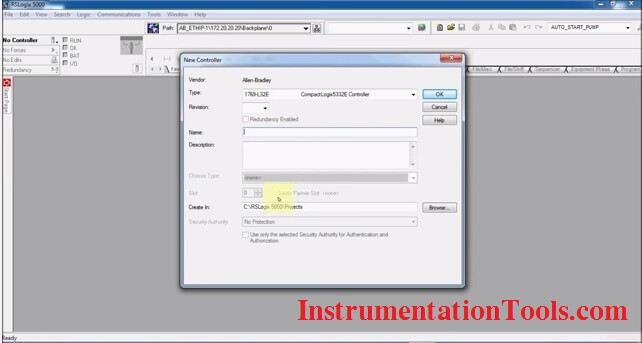

Their type will depend on the I/O of the system. In other words, you will find all the input and output tags used within the program inside of these two structures.

These data structures are created by the PLC once the user specifies the hardware used within the system. In the screenshot above, you’ll also notice that there are two elements at the start of the data file with labels and. Counter | A special register that will count a number of occurring events through the use of the CTU and CTD instructions.Timer | A special register that will contain a structure used in TON and TOF instructions that will time certain events.

#Rslogix 500 manual how to
In this tutorial, we’re going to look at the “cross-referencing” function of RSLogix 500 (Similar to RSLogix 5000), go over the steps on how to use it and cover how it can help you trace existing code faster and understand what’s going on in the PLC. The specification of each tag may be confusing to a beginner and unclear when it’s used as word, bit or byte in different instructions. The second challenge many PLC programmers come across as they get started in RSLogix 500 lies in the data structures. Therefore, it’s easy to become frustrated trying to figure out where a certain tag is being used, how it ties into the logic and why it’s being used in certain places. This task creates a challenge for novice PLC programmers as the interface in RSLogix 500 as well as RSLogix 5000 is unlike any other. In fact, most PLC programming jobs will require you to work with existing code rather than write it from scratch. Many of those who start with PLC programming are faced with the challenge of deciphering code written by someone else. I have a decent amount of experience with the SLC 500, Micrologix, and the PLC 5.Cross Reference and Data Structures Introduction If you can tell me which processor you have, I can tell you how to connect to it. The information may also be found inside the door. Not sure what the model of module card you have, power down the PLC, remove the card and look on the side. If not select the card from the list, and drag it to the appropriate slot. If you are connected to the PLC, you can choose read I/O config. Double click the I/O configuration to open the window. If you don't, and load the Program to the processor, the processor will fault. For an SLC 500, you will need to configure what cards are in which slots. The micrologix generally doesn't need much other than for you to select the processor. There are also channel configuratios, but those usually don't need to be used in a PLC that doesn't need to communicate with other PLC's or computers. The primary PLC configuration takes place in the I/O configuration.
#Rslogix 500 manual software
This software serves The SLC 500 family, as well as micrologix PLC's, the RSLOGIX 5 is used for PLC 5 systems. I am assuming you are talking about RSLOGIX 500.


 0 kommentar(er)
0 kommentar(er)
